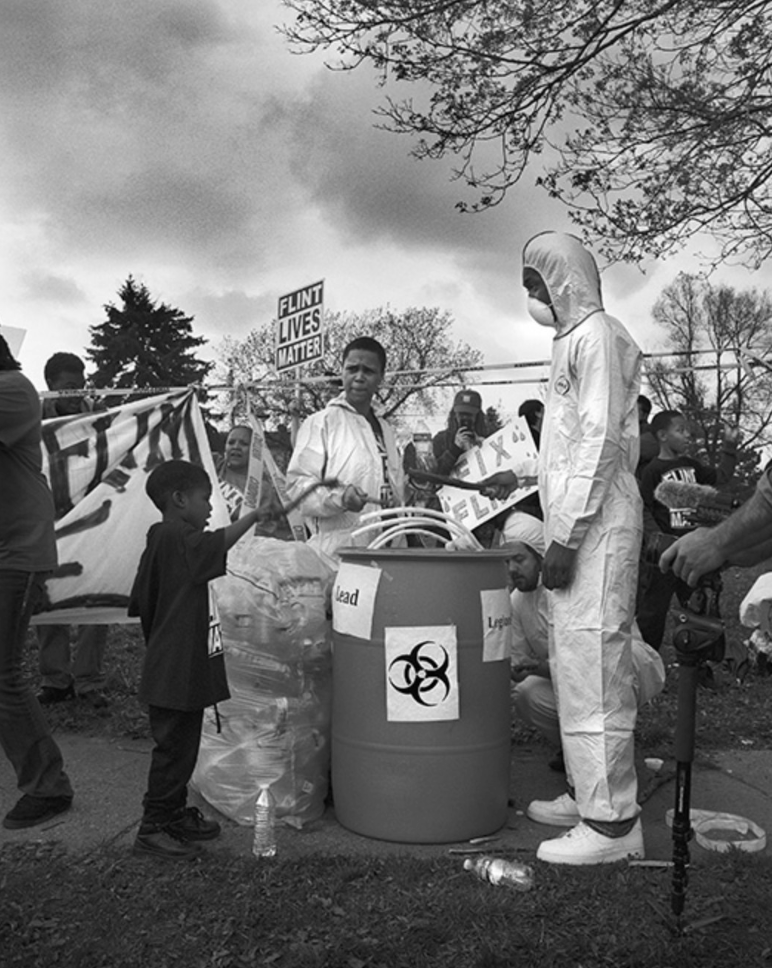LaToya Ruby Frazier, American, born 1982
Flint is Family, 2016
The Flint water crisis is another example of the violence people of color and people of poverty experience worldwide. Astoundingly this violence is seen all over America. A country of wealth and power and an extensive government with agencies to protect the people against problems like these. However, the people of Flint, Michigan, were exempt from the protection of the government. The greedy officials neglected children, such as the one in this photograph, from their right to drink water, bathe, and brush their teeth. They were plagued by a toxic water supply sparked from a switch the state used to save money. The residents of all ages quickly fell ill to the toxicity. The background of the photograph shows a protestor holding up a “Flint Lives Matter” sign. This symbol further connects the water tragedy in Flint to the Black Lives Matter movement across the US today. The slow violence and systematic racism in our country prove the ideals that America boasts are only there to protect a select group, which is wealthy white Americans. Label by Annabel Bentley
The photograph from the series Flint is Family (2016) by LaToya Ruby Frazier effectively puts a face on how environmental factors like lead affect individuals. It presents an innocent young boy alongside a man in a hazmat suit, both seeking protection from danger, but with vastly different levels of exposure. This striking juxtaposition helps the audience comprehend the magnitude of the issue and those most affected by it. Such a form of protest proves highly effective in raising awareness and visibility for those who have been marginalized for generations. Label by Jackson Smith




